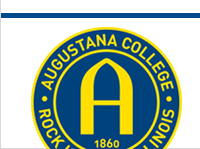Title
Defining Lutheranism from the Margins: Paul Peter Waldenström on Being a ‘Good Lutheran’ in America
Document Type
Published Article
Journal Title
The Swedish-American Historical Quarterly
Volume Number
Vol LXIII
Issue Number
Nos 2-3
First Page
101
Last Page
134
Version
Publisher PDF: the final published version of the article, with professional formatting and typesetting
Publication Date
2012
Disciplines
History of Christianity | Religious Thought, Theology and Philosophy of Religion | Scandinavian Studies
Description, Abstract, or Artist's Statement
The histories of church institutions may often be written by the orthodox “winners,” but dissenters, protesters, and even heretics undoubtedly play important roles in giving direction to the parent institution’s evolving identity. Such voices from the margins often set the agenda at crucial moments, prompting both the dissenters and establishment to engage in a debate to define proper theology and practice. Once a dissenting group has formally separated from a parent body, there is a risk that teleological hindsight will obscure the nature of these conversations, including the reasons for the ultimate separation and the intentions of both the dissenters and the establishment. The history of American Lutheranism since the colonial era has been a kaleidoscopic rotation of separations and mergers, in which dozens of Lutheran churches and sects have pushed and pulled on one another, all with varying shades of ethnic and linguistic identities, pietistic and confessional orientations, “high” and “low” worship, and conventional and radical practice. This is evident in the history of two institutions in particular, the Evangelical Covenant Church (Swedish Mission Covenant) and the Evangelical Lutheran Church in America (chiefly through its heritage in the Swedish Augustana Lutheran Synod, 1860-1962). One of the more complex, and perhaps misunderstood, characters in the overlapping history of the Augustana Synod and the Mission Covenant is Paul Peter Waldenström (1838-1917). This Lutheran-minister-turned-Pietist-evangelist was a figure of controversy in his day, prompting conflicting interpretations among his friends and foes alike. As a result, he has also been problematic for historians to sort out. This essay will shed light on the conflicts and confluence of Augustana and the Covenant by drawing from Waldenström’s letters and writings, including travel accounts written and published after his four speaking tours to North America between 1889 and 1910.
Original Citation
“Defining Lutheranism from the Margins: Paul Peter Waldenström on Being a ‘Good Lutheran’ in America” in The Swedish-American Historical Quarterly. April-July 2012, vol LXIII, Nos 2-3. 101-134.
Augustana Digital Commons Citation
Safstrom, Mark. "Defining Lutheranism from the Margins: Paul Peter Waldenström on Being a ‘Good Lutheran’ in America" (2012). Scandinavian Studies: Faculty Scholarship & Creative Works.
https://digitalcommons.augustana.edu/scanfaculty/3
Included in
History of Christianity Commons, Religious Thought, Theology and Philosophy of Religion Commons, Scandinavian Studies Commons
